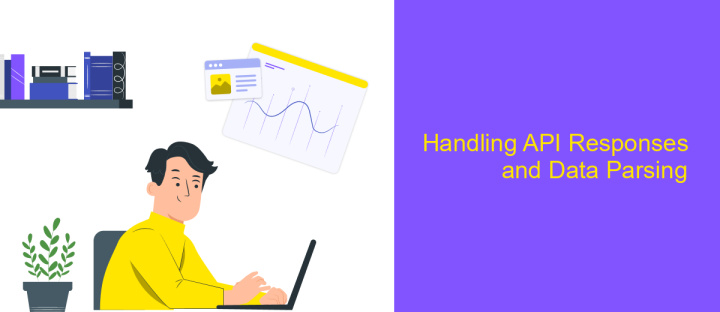Indeed API Integration
Integrating the Indeed API into your application can significantly enhance your recruitment process by providing seamless access to a vast database of job listings and resumes. This article explores the key benefits and steps involved in Indeed API integration, helping businesses streamline their hiring efforts and improve candidate matching. Whether you're a developer or a hiring manager, understanding this integration can elevate your recruitment strategy.
Introduction to the Indeed API and its Benefits
The Indeed API is a powerful tool that allows developers to seamlessly integrate Indeed's extensive job search capabilities into their applications. By leveraging this API, businesses and developers can access Indeed's vast database of job listings, providing users with real-time job search results tailored to their preferences. This integration not only enhances the user experience but also expands the reach of job postings to a broader audience.
- Access to millions of job listings worldwide
- Real-time job search results and updates
- Customizable search parameters for targeted results
- Increased visibility for job postings
- Seamless integration with existing applications
Incorporating the Indeed API into your application offers numerous benefits, including enhanced job search functionality and improved user engagement. By providing a robust and flexible platform for accessing job data, the Indeed API empowers developers to create innovative solutions that cater to the needs of job seekers and employers alike. Whether you're building a job board, a career portal, or an HR tool, the Indeed API can significantly boost your application's capabilities and user satisfaction.
Setting up Your Indeed Developer Account and Obtaining API Credentials

To begin integrating Indeed's API, the first step is to set up your Indeed Developer Account. Visit the Indeed Developer Portal and sign up for a new account. Once registered, you will need to verify your email address to activate the account. After verification, log in and navigate to the API section to create a new application. This process will generate your unique API credentials, which include a Client ID and Client Secret. These credentials are crucial for authenticating requests to Indeed's API and accessing its features.
For seamless integration, consider using ApiX-Drive, a service designed to simplify API connections. ApiX-Drive allows you to connect Indeed's API with various platforms without requiring extensive coding knowledge. By using ApiX-Drive, you can automate data transfer between Indeed and your preferred systems, enhancing your workflow efficiency. With your Indeed Developer Account set up and API credentials obtained, you're ready to start integrating Indeed's powerful job search capabilities into your applications.
Making API Requests: Job Search and Retrieval

Integrating Indeed's API for job search and retrieval involves sending HTTP requests to access job listings and related data. To begin, ensure you have registered for an API key, which is necessary for authentication. The API supports various endpoints that allow you to search for jobs based on criteria such as location, job title, and company name.
- Construct your API request URL using the base endpoint, appending necessary query parameters like 'q' for job title and 'l' for location.
- Include your API key in the request header to authenticate your request.
- Send the HTTP GET request using a tool like cURL or a programming language that supports HTTP requests.
- Handle the JSON response by parsing it to extract job details such as job title, company, location, and job description.
- Implement error handling to manage potential issues like invalid API keys or exceeded rate limits.
By following these steps, you can effectively retrieve job listings from Indeed's database. This integration allows you to display up-to-date job opportunities on your platform, enhancing user experience by providing relevant job information tailored to user preferences.
Handling API Responses and Data Parsing

When integrating with the Indeed API, effectively handling API responses is crucial for seamless data retrieval. Upon making a request, the API returns data in JSON format, which requires parsing to extract meaningful information. Understanding the structure of the JSON response is essential to access the desired elements efficiently.
To begin parsing, developers should utilize programming libraries compatible with JSON, such as Python's `json` module or JavaScript's `JSON.parse()`. These tools convert JSON data into native data structures, like dictionaries or objects, facilitating easy manipulation. It's important to handle potential errors, such as malformed JSON or unexpected data types, to ensure robust integration.
- Inspect the JSON response structure to identify key data points.
- Use appropriate libraries to parse JSON into native data types.
- Implement error handling to manage parsing exceptions gracefully.
- Extract and store relevant information for further processing.
After parsing, the extracted data can be utilized for various purposes, such as displaying job listings, analyzing trends, or storing information in a database. Efficient data parsing and error handling not only enhance performance but also ensure the reliability of the application, providing users with accurate and timely information.
- Automate the work of an online store or landing
- Empower through integration
- Don't spend money on programmers and integrators
- Save time by automating routine tasks
Best Practices and Common Use Cases for Indeed API Integration
When integrating Indeed API, it's crucial to adhere to best practices to ensure seamless functionality and maximize the benefits. Start by thoroughly reviewing the API documentation to understand its capabilities and limitations. Implement robust error handling to manage potential issues effectively and ensure data integrity. Regularly monitor API usage to avoid hitting rate limits, which can disrupt service. Security is paramount; use secure authentication methods to protect sensitive data. Additionally, consider automating processes with tools like ApiX-Drive, which can streamline integration and reduce manual effort, enhancing efficiency.
Common use cases for Indeed API integration include streamlining recruitment processes by automatically posting job listings and retrieving candidate applications. Companies can leverage the API to create custom dashboards that track job performance metrics, improving decision-making. Integrating Indeed API with CRM systems can enhance candidate relationship management and optimize the hiring workflow. By using Indeed API, businesses can access a broader talent pool, expedite hiring processes, and improve overall recruitment strategy. Remember, continuous testing and optimization are key to maintaining a successful integration.
FAQ
What is Indeed API Integration?
How can I start using the Indeed API?
What are the main features of the Indeed API?
How can I automate Indeed API integration without extensive coding?
Are there any limitations or restrictions when using the Indeed API?
Apix-Drive is a simple and efficient system connector that will help you automate routine tasks and optimize business processes. You can save time and money, direct these resources to more important purposes. Test ApiX-Drive and make sure that this tool will relieve your employees and after 5 minutes of settings your business will start working faster.


